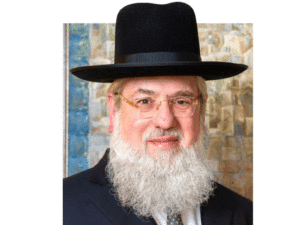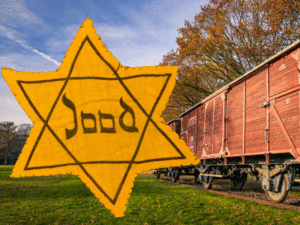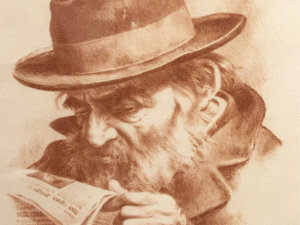One of the many mysteries about the Haggadah and Pesach is the secret of the fours. As we have all known since childhood, there are four cups, four sons, four terms of redemption, four questions and many other such even numbers. The Vilna Gaon relates all of these to the “four who must give thanks” (Brachos 54b). However, the Gemara (Pesochim 109b) raises the issue of zugos, which are generally considered to be dangerous and should be avoided. Why, therefore, is Pesach so permeated with these multiples of two?
The Gemara answers that since the Seder eve is considered a “leil shimurim – a guarded night,” there is nothing to worry about. Nevertheless, this doesn’t seem to answer the question completely. It is true that the Seder comes with certain protections, but the Torah rule usually is that we should avoid all dangers, yet here we seem to invite and revel in them.
In fact, there is an opinion that there are actually five cups, if we count the word veheiveisi, and I shall bring you, in the pattern of redemption, so the terrible twos could have been avoided.
Furthermore, surely the Baal HaHaggadah could have found another type of son to add to the group so that we would avoid zugos. No, it seems that we are almost looking for trouble, along with the assurance that we are immune from this particular hazard. Let’s explore more deeply what happened on this special night and how we are supposed to commemorate and relive its meaning and power.
One of the dramatic things that we do at the Seder is open the door. The Bais Halevi (Parshas Bo) indicates that this, too, demonstrates our absolute lack of fear from anything the outside world may throw at us.
In fact, Rav Yissochor Dov of Belz taught that we send a child to open the door because we are celebrating the final nevuah in Klal Yisroel, “Behold I send you Eliyahu Hanovi…and He will turn back the hearts of fathers with their sons and the hearts of sons with their fathers” (Malachi 3:23). The rebbe concludes that this magical, mystical moment signifies the fact that at the ultimate geulah, it is the children who will lead their fathers back to Hashem.
The Kotzker Rebbe, on the other hand, corrected one of his Chassidim, who glanced at the door when it was opened. “You think that Eliyahu comes through the door? He comes through your mind” (Haggadas Atah Bechartanu, page 370).
Clearly, something very profound is happening at the Seder. Let’s look even deeper for some rays of illumination.
The Ramchal (Derech Hashem 4:4:9) teaches that upon leaving Egypt, “Klal Yisroel was cleansed and purified from the sin of Adam Harishon and was restored to the pristine state of Adam before he sinned.” Rav Dovid Cohen, rosh yeshiva of Yeshivas Chevron (Zeman Cheiruseinu, page 130), asks a powerful question about this statement. The Gemara (Shabbos 146a) states that “when the nochosh hakadmoni, the primordial serpent, accosted Chava, he infected her with a spiritual toxicity. Klal Yisroel, who stood at Har Sinai, was cured of this poison, but the other nations, who were not there, retained this flaw.”
Now, it certainly seems from Chazal that it was Har Sinai and Mattan Torah, not Yetzias Mitzrayim, that removed this defilement. Rav Cohen does not offer a complete answer, only to suggest that there seem to be two stages of divine antidote.
To answer this important question, we must explore one of the classic bilateral mandates the Torah provides. The posuk says, “Sur meira va’aseh tov – Turn from evil and do good” (Tehillim 37:47). Most meforshim (see, for instance, the Divrei Chaim) explain that this is the proper order. First one must avoid sin, and only then one can achieve the positive level of doing good. At first, this progression would seem to be an answer to the Ramchal’s apparent contradiction to the Gemara. Yetzias Mitzrayim effectuated a purification from sin on the part of Klal Yisroel. We needed to rid ourselves of the 49 levels of defilement, from the idolatry in our midst, before we could move on to the 49 levels of holiness and purity. Thus, both are true. It was Yetzias Mitzrayim that expunged the zuhama from our DNA. However, it took Mattan Torah to substitute the madreigos we required to achieve deveikus – cleaving – unto our Creator.
While all of this seems to be logical, there is a serious contradiction from the Haggadah itself. We know that there are 14 simanim that herald the actual order of the Seder. The first two are Kadeish and Urchatz, literally meaning make Kiddush and then wash. Many of the commentaries on the Seder (e.g., Kos Yeshuos; Rav Yonasan Steif) ask that these two seem to be a reversal of the pattern discussed above of sur meira va’aseh tov. Kiddush, which means to sanctify, should come after urchatz, which seems to stand for washing away the tumah or evil. In fact, these meforshim point to the posuk (Yeshayahu 1:16) of “rachatzu hizaku – wash yourselves, purify yourselves.” The novi makes clear that washing oneself comes before achieving sanctification.
One common answer offered is that the night of the Seder is different. On this night, we don’t have to wait for freedom from sin to achieve new levels of kedusha. On the contrary, that is the essence of Hashem’s gift to us by “skipping and passing over” our imperfect houses when He was punishing the Egyptians. We literally flew up and out of the 49 levels of tumah and rose during Sefirah to the madreigah of being ready to receive the Torah.
We are now in a position to appreciate the Ramchal’s novel teaching. On Pesach night, when we reverse the usual order of accomplishments, we sit in the lily white kittel channeling the avodah of the kohein gadol when we are still far from the desired level of holiness. Yet, it is the Yom Tov of Pesach itself that allows us this reversal, because the lights and power of Pesach propel us ever higher into the spiritual stratosphere. There, our sins and negatives simply fall away without the necessity of the normative teshuvah apparatus that is required the rest of the year.
How does this special “cutting the line” and “skipping ahead” work? My rebbi, Rav Yitzchok Hutner, provides several answers, although he doesn’t address the above issues directly. However, he teaches that Pesach gives us many firsts, all of which grant us incredible access to new levels of kedusha. The first is that Yetzias Mitzrayim created the kedusha of the firstborn bechorah (all references are to Maamorei Pachad Yitzchok 6:6, 24:15). It also granted us the lofty title of Bonim Lamakom – Children of Hashem (ibid. 24:14). It heralds all future redemptions, including that of Moshiach (15:7, 26:12) and begins the process of eradicating evil in the world (102:7).
But perhaps most importantly for this discussion, Yetzias Mitzrayim constituted what the Zohar calls “a plague for the Egyptians but a refuah for Klal Yisroel” (95:15). Rav Tzadok Hakohein of Lublin (throughout his commentary on the Haggadah) explains this phenomenon as follows. It has been said that it was relatively easy to take the Yidden out of Mitzrayim, but it was much more difficult to take Mitzrayim out of the Yidden. As it says in the Haggadah, Hashem removed one nation (Klal Yisroel) from the midst of another (Egypt). This means that the exodus constituted a surgical removal. To accomplish this, Hashem gave us the gift of greatness so that we would spiritually survive the surgery. That is the true miracle of Pesach.
Of course, the Creator can do anything. But spiritual change requires that He exercise the free will of people involved. Hashem therefore gave us a pre-op blood transfusion of kedusha to which we were not technically entitled. It was His great love for us that brought us to the moment when we became a nation there – Vayehi shom l’goy. It was specifically there, in the depravity of Egypt, that we achieved our nationhood, and it is for that which we are the most grateful.
On Pesach, we are not worried about the zugos, because it is so obvious that there is only One G-d. It would not only be superfluous to be concerned; it would almost be sacrilegious. And so we put everything into fours to remind ourselves that when Hashem is taking care of us Personally, all we have to do is concentrate upon becoming the best we can be. He will take care of the rest.
May we grow this Yom Tov in our emunah and bitachon, and in our deveikus in Him, and soon the fulfillment of “they were redeemed in Nissan and will once again be redeemed in this noble month” will come to pass.








